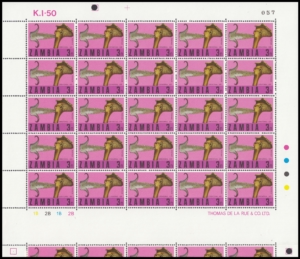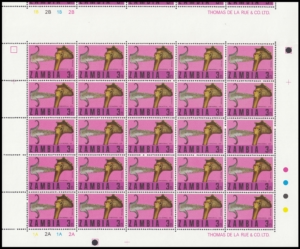Skip to content
Details
- Designer: Gabriel Ellison
- Printer: Thomas De La Rue & Co Ltd
- Process: Lithography (Delacryl process)
- Paper:
- Watermark: None
- Perf: 14 (comb)
- Cylinders: Printed in four panes, separated by vertical and horizontal gutters, and guillotined through vertical gutter for distribution.
- 1B (Yellow) 2B (Black) 1B (Blue) 2B (Reddish Mauve) : 1A (Yellow), 2A (Black), 1A (Blue), 2A (Reddish Mauve) [upper left : lower left]
- 1C (Yellow) 2C (Black) 1C (Blue) 2C (Reddish Mauve): 1D (Yellow) 2D (Black) 1D (Blue) 2D (Reddish Mauve) [upper right : lower right]
- Sheet: R5 x 5 (25 stamps)
- Quantity:
Sheet Numbers



